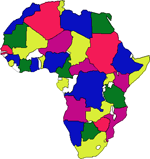[Published: Saturday November 01 2025]
 How Israel's 'Yellow Line' is redrawing Gaza and preventing displaced Palestinians returning home
ISRAELI OCCUPIED AND STARVED GAZA, 01 Nov. - (ANA) - Thousands of displaced Palestinian families from Gaza City are still living in shelters in the southern Gaza Strip despite the ceasefire agreement between Hamas and Israel on 10 October, brokered by the United States and Arab mediators.
These families have been unable to return to the neighbourhoods they fled from because they now lie within what has become known as "the Yellow Line," which remains under Israeli control.
Under the terms of the ceasefire agreement, Israel drew new boundaries for its withdrawal from the Strip, encompassing more than 58% of Gaza’s total area, and named it the "Yellow Line." Israel says it will not withdraw from this area until it verifies that Hamas has been fully disarmed during the second phase of the agreement.
Thousands of Gaza families are banned from returning to their destroyed homes and neighbourhoods within these boundaries, leaving them displaced indefinitely in southern shelters.
Oday Sabra, 43, who lived in the eastern part of Gaza City's al-Zeitoun neighbourhood—now within the new Israeli-controlled zone—feels deeply frustrated about being unable to return home.
Sabra told The New Arab, "I thought the war was over when Hamas handed over the Israeli hostages under the ceasefire agreement. But the war continues for me and for the families still unable to return to their neighbourhoods."
He added that he never expected the war to be considered over while so many families remain barred from their homes and neighbourhoods. "I believe the war has ended only on paper. As long as Israel hasn't fully withdrawn from the Gaza Strip, the war continues," he remarked.
Sabra said the ceasefire agreement, which was initially welcomed by many Palestinians, "quickly proved to be a very bad deal that did not end the suffering of the people."
The agreement faced a major test after Israel violated it by launching heavy airstrikes on various areas of the Gaza Strip on 29 October, killing 110 Palestinians, including 46 children and 20 women. Israel claimed the strikes were in response to the killing of an Israeli soldier by Hamas fighters east of Rafah, a claim Hamas denied.
Israeli media reported that the Israeli government is considering expanding the Yellow Line to include 70% of the Gaza Strip—something the US administration opposes.
The real problem is that the Yellow Line on an online map is unclear to residents. Many rushed to return to their neighbourhoods once the ceasefire was announced, which led to a tragic disaster for one family as they attempted to go back to their home in Gaza City's al-Zeitoun neighbourhood.
On 17 October, a civilian vehicle carrying the Shaaban family—eleven people, including seven children and two women—was returning from southern Gaza to their home located within the Yellow Line area under Israeli military control.
The family had no idea that entering the restricted area would cost them their lives. An Israeli aircraft targeted their vehicle with a direct missile strike, killing everyone on board.
Eyewitnesses said the army could have warned or stopped them using non-lethal means, but instead chose to strike immediately—turning their attempt to "return home" into a journey of death.
"The Yellow Line" encompasses entire Palestinian towns in the northern Gaza Strip such as Beit Hanoun, Beit Lahia, and Jabalia, as well as southern areas like Rafah City, Abasan, and Khuza'a east of Khan Younis.
Muin Abu Sultan, who was displaced from Beit Lahia and now lives in a shelter camp west of Deir al-Balah in central Gaza, told TNA, "My town has turned into a pile of rubble. Even if Israel withdraws, there isn’t a single liveable house left."
Abu Sultan believes that by maintaining control over 'the Yellow Line'—which includes more than half of Gaza's land—"Israel aims to instil despair among Gazans and push them toward emigration."
"We want the war to stop at any cost. We want death to end. But the ceasefire agreement prevents us from returning to our neighbourhoods, prevents us from resuming our lives, and leaves us displaced and homeless in shelters," he added.
Political analyst and writer Talal Okal told TNA, "The Yellow Line effectively represents new borders separating Israeli-controlled areas from Palestinian ones, deepening the geographic and political division within Gaza."
He explained that demarcating the Yellow Line is a prelude to permanent demographic and geographic change in the Strip, "as Israel seeks to maintain its security control over Gaza."
Okal added that Israel "insists on not withdrawing from the Yellow Line area until Hamas' rule over Gaza ends, its weapons are dismantled, and a new Palestinian government is formed that will not engage in any form of resistance against the Israeli occupation."
"Even if all this happens, Israel will still maintain a buffer zone about one kilometre deep inside the Gaza Strip, depriving Gazans of access to their agricultural lands," he concluded. - (ANA) -
AB/ANA/01 November 2025 - - -
|





